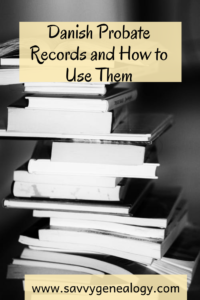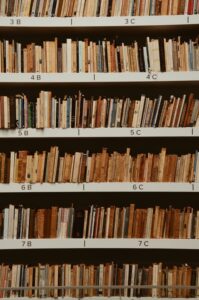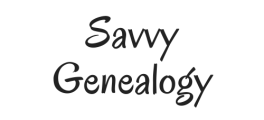Danish Probate Records and How to Use Them
We’re diving deeper into Danish probate records this week. So you can have a taste of what they are, what to expect from them and where to find them. Many of these are found on the major genealogy websites such as Family Search, Ancestry, My Heritage, and Find My Past. But the Danish National Archives are a good place to search out these records. So let’s dive in.
What are Danish Probate Records
When you think of probate records it usually means a deceased member’s will that they create before their death. But it’s actually any record created to deal with the deceased’s estate. It names their family members and how to distribute their possessions among the creditors and the remaining family. The Danes are no different. They also need to figure out how to divide the deceased’s estate.

The process began as soon as the family notified the authorities that someone in the family has died. Then 30 days afterward, the family gathered at the deceased’s home to sign the probate papers with the proper authorities. Now in Denmark, the law states that all family members had to be present when the estate was divided no matter where they lived.
Women and children under the age of 25 had to have a guardian appointed for them. They legally didn’t own anything on the estate. So the Danes appointed the closest living relative to be their guardian. They wrote up separate guardianship papers to appoint them then moved onto dividing the estate. So there will be separate papers for the wills and the guardianship and you should look for both.
What Can You Find in These Records
You will find lots of family relationship information. Danish probate records can help you find relationships before the census records were used. In fact, they are vital when census records didn’t have a lot of family info on them.
It’s fascinating to read some of these wills because they contain the following info…
- Name and age of testator
- Residence
- Heirs
- Relationships
- Description of land and property
- Date of will
- Names of witnesses
Then there’s the guardianship records that hold so much more…
- Name of the ward or minor.
- Sometimes age or birth date and place
- Name of guardian and residence.
- Relationship, if any to the ward
- Date on which the inheritance was paid to the court and the estate reference involved. (If the inheritance comes from one or several sources, each document is referred to with the amount.)
- Date which the inheritance is paid to the ward or minor.
- The ward’s status at the time the inheritance is paid, this is important if their residence is different from the other probate records
- Expenses charged to the estate
So you see how valuable these Danish probate records are for genealogy? The government used them to deal with the facts of life, but without those records, we wouldn’t know our ancestors. So it’s worth the effort to find them and to glean all of the information that you can out of them.
Where Do You Find Danish Probate Records
So Family Search is the first place that I recommend people go to search for these records. They have a whole collection of them under the title, “Denmark, Probate Indexes, 1674-1851” Now these are indexes to the actual probate records. These are not the real records, just the indexes. But this is where you need to start if you can’t find them by doing a general search.

The Family Search Wiki has a lot of website links to other researchers and companies who have worked or are working on making probate records easier to access and in English. So don’t waste your time trying to find them yourself because someone else may have already done the work for you.
Denmark Estate Records, 1436-1964 is another great collection that Family Search has for probate records. You search this one by county then estate. Then you pick if you want to search wills or some other record that the estate produced. Some estates had several different types of records while other estates had two.
These are just a few places that you can find Danish probate records. I think this will keep you busy for awhile. So I’ll show you the Danish National Archive records another day.
Last Thoughts
Danish probate records are not for the faint of heart. They do require commitment and determination because they can be difficult to find and translate. But the reward when you find that long lost ancestor is incomparable. This is why I love Danish research! This is what I do! So if you are done trying to research these records yourself and you need help. Then I’m just a click away.
And in the meantime…good luck and happy hunting!
Tiffany
P.S. Related Reads…
ancestry.com, Danish church records, Danish National Archives, Danish probate records, familysearch, familysearch.org
